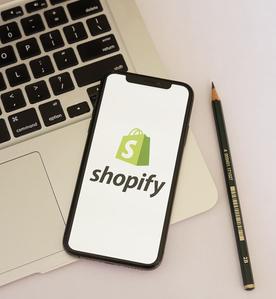16 Product Discovery Questions Under 3 Categories [with Examples]
Sector: UI/UX
Author: Nisarg Mehta
Date Published: 07/20/2020
![16 Product Discovery Questions Under 3 Categories [with Examples]](/_gatsby/image/cdc22691785264a956c56910f0894048/3012fe27395a294ae0f626e37bfeb927/16-Product-Discovery-Questions-Under-3-Categories-with-Examples_inner.jpg?u=https%3A%2F%2Fbackend.techtic.com%2Fwp-content%2Fuploads%2F2020%2F07%2F16-Product-Discovery-Questions-Under-3-Categories-with-Examples_inner.jpg&a=w%3D750%26h%3D417%26fm%3Djpg%26q%3D75&cd=82465ca8e82bbd150d1ed6af471ef80b)
Contents
According to Harvard Business School’s professor Clayton Christenen, 95% of the new products introduced fail.
Tech businesses are fragile, in the sense that there is always more competition and the desire to stay relevant. The overheads are not as high as in other industries, but the customer has to find the value in the product in order to pay for it. This is the key reason why Amazon used its ‘customer obsession,’ and many other companies like YouTube, Slack, and Shopify pivoted.
At the core of agile methodology, the motive is to iterate the product in a systematic manner, such that you end up with the functionalities that have a market. Hence, every round of optimization has to come with feedback and evaluation of further development. That’s what the digital product discovery process is all about.
The digital product discovery process works like a system. You input the right data, get the feedback, iterate, and get a functional product with a considerable market potential at the end. Use the questions enlisted here to not just begin, but even sharpen your product discovery process:
Question Category #1: What is the Problem you are Solving?
All entrepreneurs and product managers understand the fact that their product has to solve a problem in order to get traction. But the very nature of problems can be classified to further understand and evaluate what is the potential size of the value proposition.
- Generally, the idea is to understand:
- Does your product directly solve a problem?
- Does it provide convenience?
- Who else has solved this problem earlier? If none, then do you think it’s worth the effort?
- How many people are facing this problem?
The first question forms a relationship between a problem and a solution. If you have identified a problem and are now ready with a solution, the size of your market will be directly proportional to the scale of that problem.
The second question focuses on the other side. You might have discovered a more convenient way to execute a process that people have already been doing. So, you are not directly solving a problem but making the existing process more efficient and convenient. The size of your market will be directly proportional to the value your customers put on this convenience.
Both direct solutions and conveniences can lead to a large market and a viable business. Besides, this is the ideation phase, and eventually, the success of your product will come down to the quality of your execution.
Question Category #2: Is your Product (Solution) Needed?
If only Kohler had asked this question before coming up with an AI-based toilet that cost around $5,000, history would have been something different right now.
Identifying large problems or inefficiencies in the system is critical, but they are only the first step. Now that you understand that there is an audience with your identified problem or inefficient process, your job is to figure out whether there is reasonable space for your product or solution in the same market. Here are the questions that will lead you to refine your product discovery process:
1. Against the presence of competing brands in the market, why will your target audience choose your product?
This will help you get over the fact that you have somehow landed on a novel, undiscovered market. Many a time, founders end up in markets that were long identified and avoided by major companies. They did not pursue the same market because they understood that it was too competitive or not profitable enough. As a product manager or entrepreneur, you have to mitigate this risk and identify the key reasons why your target audience will choose your product over all other alternatives.
Formulate your answer in the form of features and benefits instead of working on your brand equity. Brand equity takes years to be generated and is an expensive process. Relevant features that give clear benefits will give you an edge right away.
2. If you launch your product (solution) tomorrow, will your customers buy it?
Good products don’t guarantee business success. Market timing is the intangible variable that sits between products and the product-market fit. The market has to be ready for your solution. This can depend on consumer behavior, the value the consumer puts on your solution, or even the availability of ancillary (support) services for your product in the market.
Answering this question will help you understand whether the timing for your product is reasonable. Take each possible risk factor and optimize your strategy accordingly. For instance, if consumer behavior may not support your product, you might have to start with a soft launch and educate the market. If your consumers do not value your solution, you might have to partner with other products or services to get initial traction. If the ancillary services are not available for your product, you might have to start by setting up a base for them.
Looking at the companies that closed in the market and performing a cause-effect analysis for their failure might be a very educating exercise to narrow your risks.
3. Is your app good enough to retain your customers for repeat business?
This question will push you to think about the sustainability of your business model, in line with the functionality of your app. The product discovery process is ultimately a tool to mitigate going concern risks for your business. You would want to avoid a situation where there is a spike in app usage initially, but it eventually fades away.
Thinking about potential scenarios of app usage and repeat business along with ready solutions for each scenario will help you extract more value from your response to this question. You have to think in probabilistic terms – what if your customer retention comes to X, Y, or Z levels, what is the probability of each level and what would you do if one scenario unfolds in reality.
Question Category #3: Will your Product Idea Work?
The answer is – it depends on the execution. So far, you have organized your thinking and brought together the insights that have tilted the probabilities of success to your side. That said, good products are built in cohesion between insights and great execution. This stage will focus on the latter.
The ideal way to proceed with execution would be to launch an MVP, have a soft launch, and hear what your customers have to say. Your customers will give you feedback via ratings, written emails, and even their behavior on the app.
Too many people are adding it to the cart but not buying? Try a nudge with payment integration or discounts or even free delivery. People are spending several minutes on your app but not buying anything? Streamline your UX to make the most successful digital product categories more apparent.
Such ideas for features will come from an iterative and continual approach to launch, feedback, and update.

In Conclusion
The product discovery process is a great tool for product managers and entrepreneurs to ensure that they are mitigating all the key risks and developing an MVP product with the highest probability of finding a market fit. As far as you are objective and ready to pivot with the right feedback in place, you will have a greater chance to succeed. One key factor that is decisive in executing the product discovery process with finesse is – the right team.
If the process of taking your idea to the market seems overwhelming to you – don’t worry. Our mobile app development team is here to walk you through the entire process and partner with you to help you execute your vision. Get in touch with us today.
Latest Tech Insights!
Join our newsletter for the latest updates, tips, and trends.







